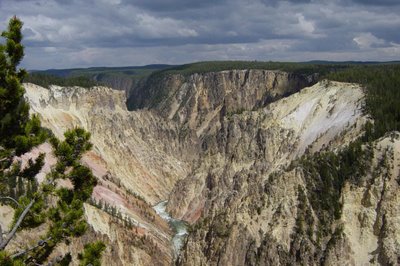
I have never been so stunned by the beauty of a natural feature. This is not the Grand Canyon of Arizona, but a smaller, geothermal version (900 feet deep, and about half a mile across). It's free for the price of a hike.
The chemical and heat action of the geyser basin cause the rhyolite rock to become rotten (not in the sense of putrefaction, but the rock becomes easily brittle and erodible). Thermal activity still exists in the canyon in geysers and hot springs, as it does in Old Faithful, and the many springs, mudpots, hotspots, and streams in Yellowstone. In many places, sulfur fumes permeate the air.

The colors in the canyon are due to hydrothermal reactions. The rhyolite in the canyon contains various iron compounds. When the old geyser basin was active, chemical alterations took place in the iron. Exposure to the elements as well as the sometimes acidic gases that accompany the hot water cause these changes. The rocks are oxidizing; the fantastic symphony of color is because the canyon is rusting.
---o0o---
No comments:
Post a Comment